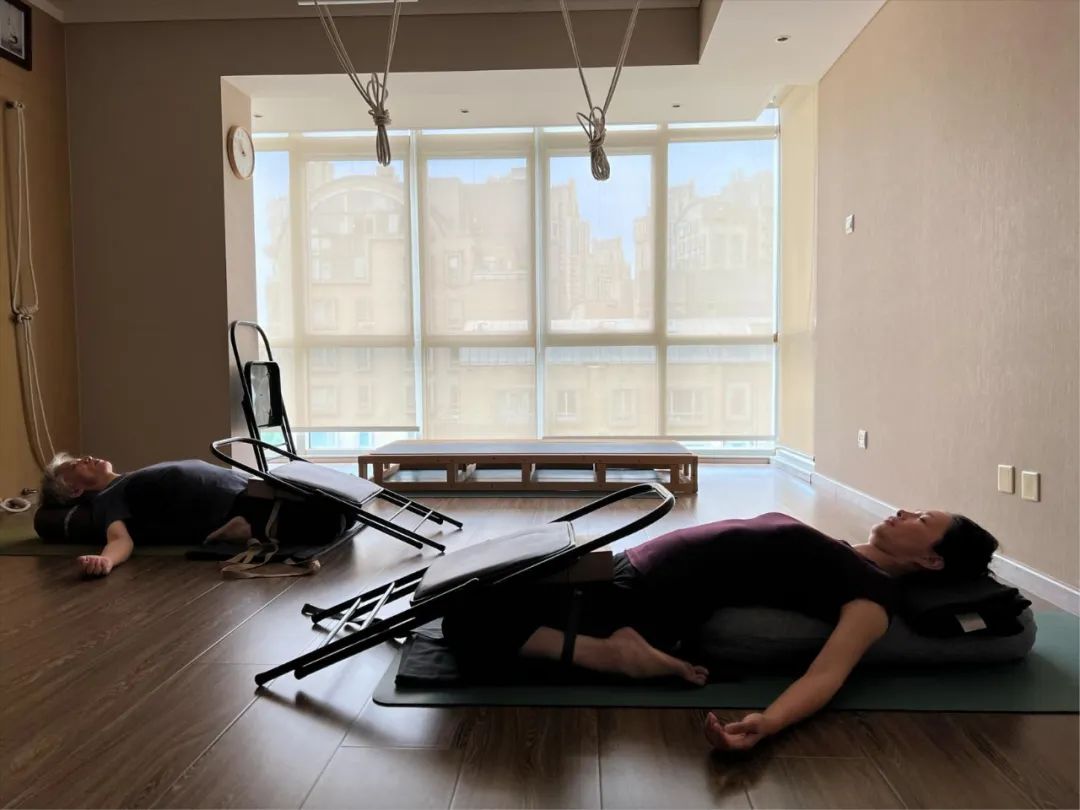Exercise log — issue 17 (Part 2): using gravity to heal the well-known “traction” is a widely used physiotherapy method.

It uses the principle of force and reaction force to act on the human spine or limb joints through the external force generated by manipulation or electric devices, so as to make the tissue separate and stretch to a certain extent, so as to achieve the purpose of treatment.

Our body has mass, so there is always an interactive force between the body and the earth – gravity.

The direction of gravity is always vertical downward, which makes the use of gravity to heal the body a highly feasible, simple and convenient physiotherapy method.

In addition to the cervical spine and lumbar spine, which are prone to lack of space, the repair with gravity during practice will also act on the ankle, calf and thigh muscles, trapezius muscle and other parts that are prone to fatigue, or it can act on any part that needs to be repaired, and even on the internal organs of the body, as well as the nervous system.

Let’s take a look at some training methods to repair your feet.

Generally, we seldom pay attention to our feet, but it is one of the most used parts.

The evolution of civilization has enabled us to put shoes on our feet, greatly improving their comfort and adaptability.

But the feet will also become insensitive and lack space.

This exercise makes the ankle alternate in extension and contraction, and uses gravity to extend the toes, phalanges, arches, ankles and other long-term contraction load-bearing parts.
Touch our feet and ankles with gravity, and then massage them.
In the king of fish, the whole hip is placed according to the arc of the inside of one foot, and then the weight of the body is put on.
The inner edge of the foot supports the pelvis like a tray of a tea cup.
This is an interesting sitting posture unique to yoga.
Let’s not talk about its impact on the brain level, but just experience the effect of gravity on the ankle.
As long as you enter and keep in the asana correctly, you will feel a special angle of stretching and pressing on the ankle, instep, knee joint and other positions.
After traveling with my teacher for several times, I learned that the classic cow face pose is a particularly important tool for repairing tired calves and ankles during travel.
The teacher told us that the calf muscle is the first muscle to decline among all the big muscles in the body.
Because it is too far away from the heart, it is difficult to get sufficient blood nourishment after the circulation gets worse and slows down in old age.
So this pose is one of the poses he often uses for self massage.
All asanas are related to gravity all the time, but if the purpose of a asana is to repair with gravity, then “gravity” needs to be specially emphasized here.
Just like the parts that the author wants to emphasize in the article need special black and bold.
So how to emphasize gravity? Let me share with you the following methods used by the teacher.
The chair here is to replace the wall rope to make the body passively suspended, so that the repair of internal organs and nervous system by gravity is emphasized.
In life, we don’t have many opportunities to get wall ropes, but chairs are available everywhere.
This method will be dangerous if it is not entered properly, so it is only recommended for mature practitioners who have experienced wall rope.
One of the most effective ways to treat depression in yoga physiotherapy: is it really so magical that several bricks support the body in the upright posture (needle bed posture)? I suggest you try it yourself.
It is human nature to be used to it, so countless apples fell from the tree, but only Newton noticed the deep meaning of this phenomenon.
The perception and application of gravity seems simple and taken for granted, but in actual practice, it requires the practitioner to have a mature grasp of asana and rich and sharp perception.
“It’snoteasybecauseit’seasy.” the teacher once said that the simplest is the most difficult.
Our understanding of life and practice will make us feel the same.
Lifelong learning..

